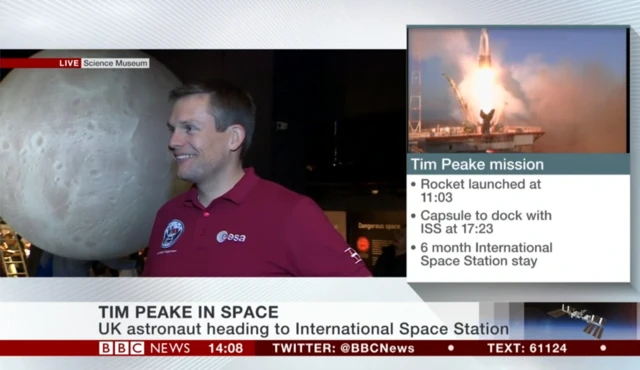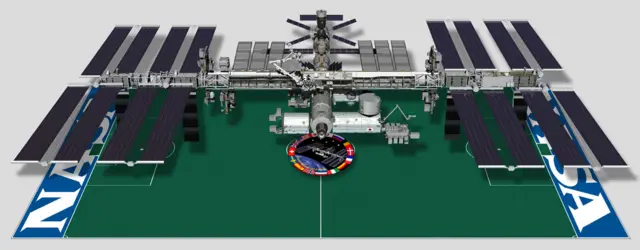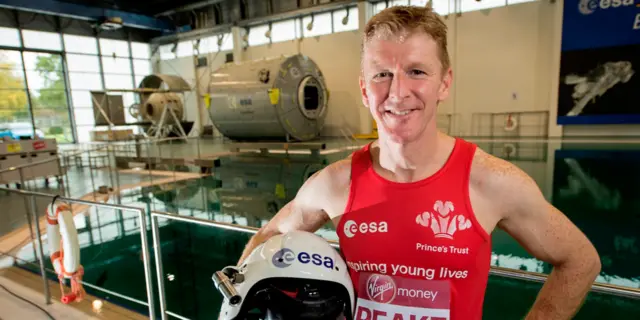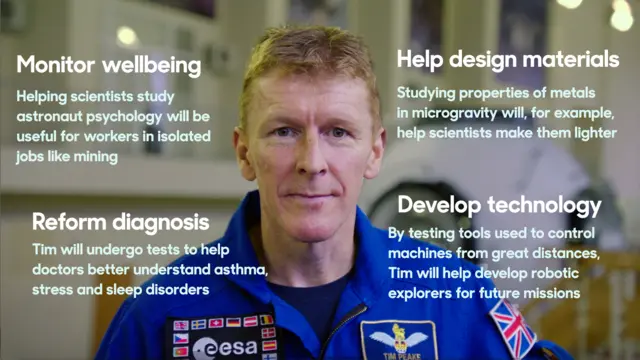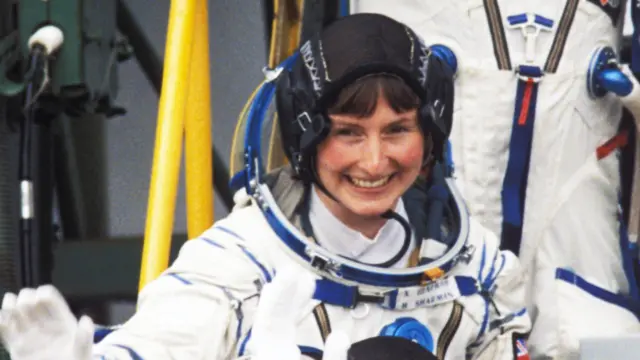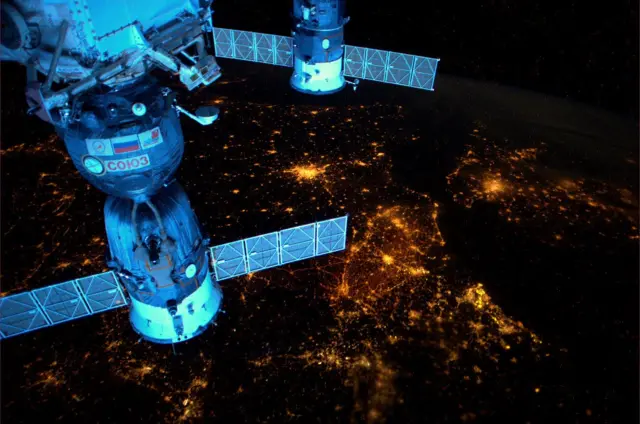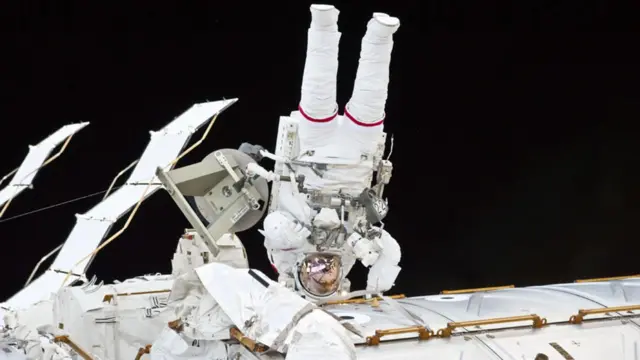Looking back at lift-off: More spectacular imagespublished at 16:21
More photos are coming in of the lift-off in Kazakhstan this morning.
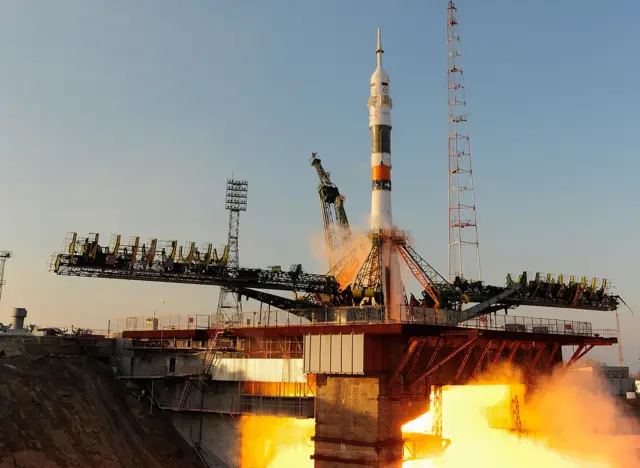 Image source, ESA/Stephane Corvaja/Getty
Image source, ESA/Stephane Corvaja/Getty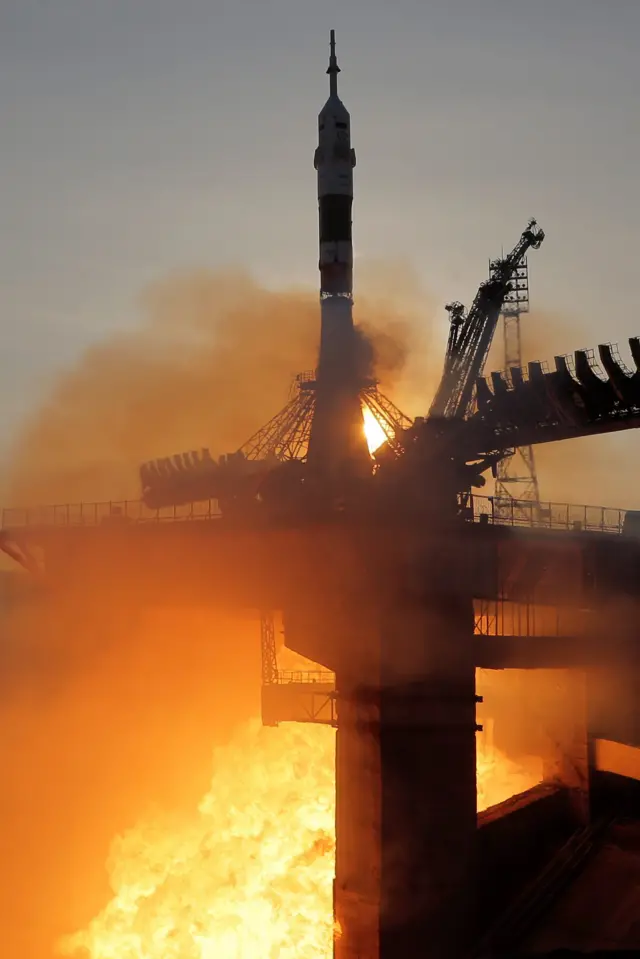 Image source, EPA/Maxim Shipenkov
Image source, EPA/Maxim Shipenkov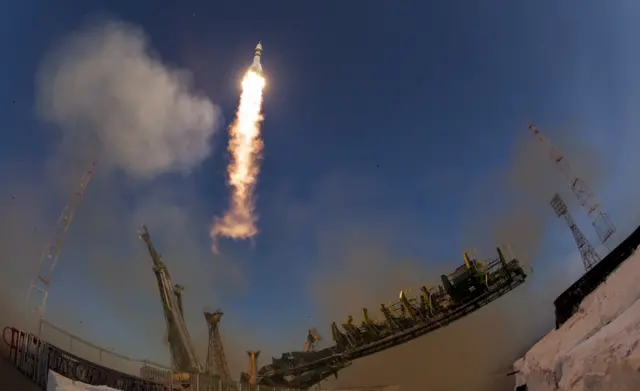 Image source, NASA/Joel Kowsky/Getty
Image source, NASA/Joel Kowsky/Getty...but the shots most of us can't forget are those of Tim Peake waving goodbye to his son, through the window of the bus:
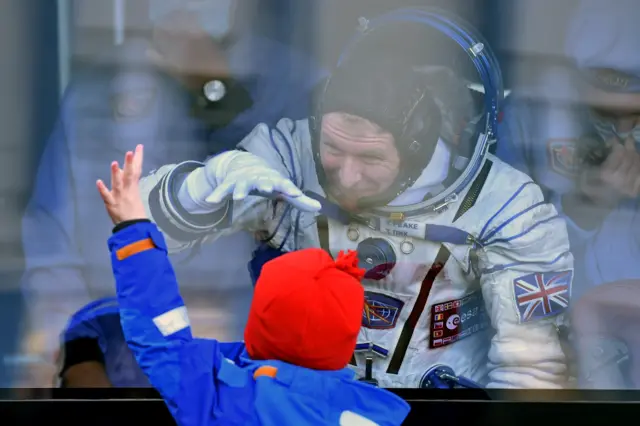 Image source, AFP Photo
Image source, AFP Photo
